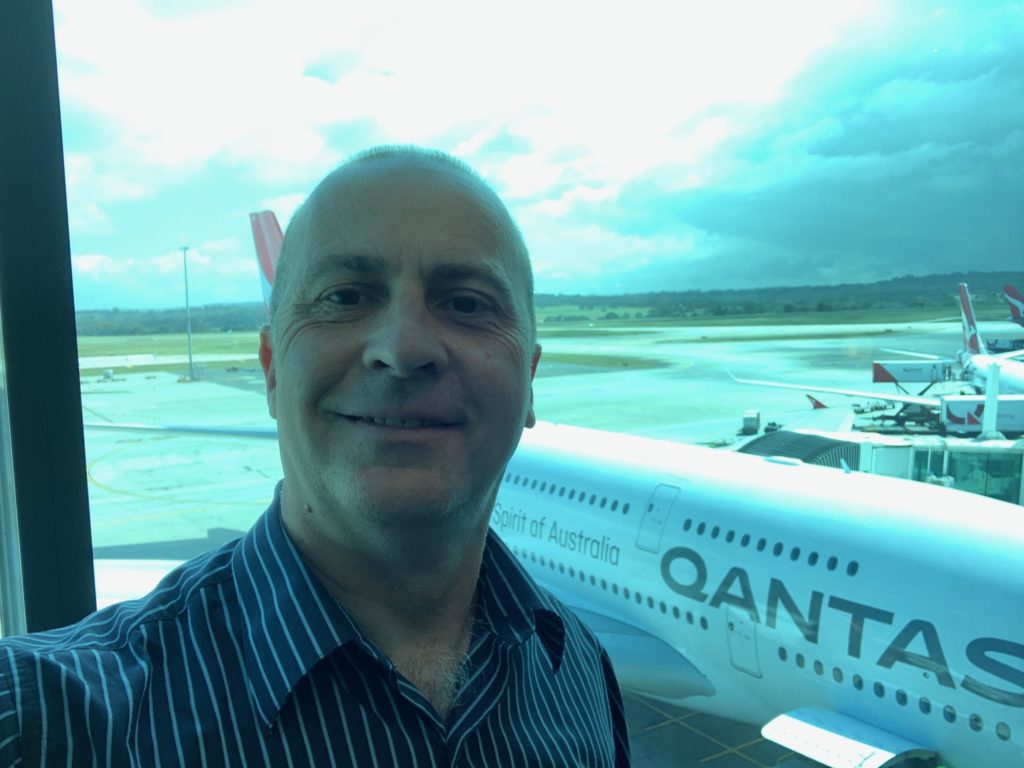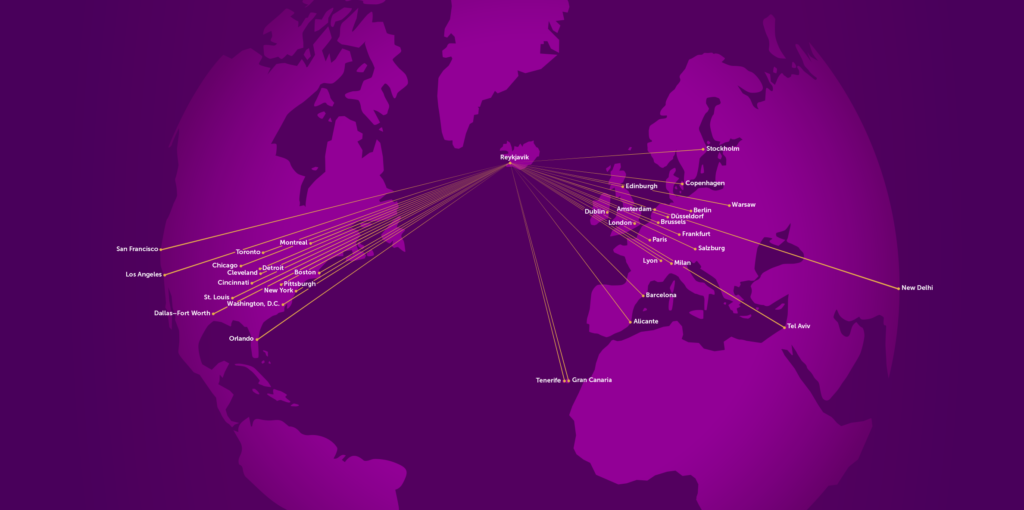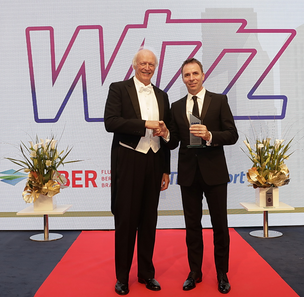The CAPA – Centre for Aviation was launched in 1990, to build aviation knowledge. I find them a great go to site for good deep air research. Since 2003, their annual Awards for Excellence have been intended to showcase success and industry leadership.
Their 2018 winners were announced this week in Berlin at the 2018 CAPA World Aviation Outlook Summit. I wish I had been there for the buzz, the award announcements and the wonderful city that is Berlin. Being in two places is hard to do!
And the winners this year were:
Airline of the Year: Qantas.
- launch of direct service from Perth, Australia to London, England -the first ever nonstop link between Australia and Europe
- launched Melbourne to San Francisco
- asked Airbus and Boeing to develop a new ultra-long range 300 passenger widebody capable of operating nonstop flights from Sydney to London under the codename “Project Sunrise”.
- Jetstar Group’s overseas affiliates are all now profitable
- record profits for 2016, 17 and 18
- high customer satisfaction ratings
- successful loyalty programme
Qantas CEO Alan Joyce was named Aviation Executive of the Year in 2015 in the same year that Qantas group got the CAPA Airline Turnaround of the Year. I have to give him credit for doing what I did not think was possible: turning around Qantas financially, improving it and building a successful low cost subsidiary. I have flown almost 500 times on a plane belonging to the Qantas group.

Other airline winners have been: Qatar (2016), Ethiopian (2015) and Air New Zealand (2014)
Aviation Executive: Jozsef Varadi (Wizz Air, Hungary)
Jozsef Varadi was, for a while, the CEO of Malev Hungary. In 2003 he co-founded Wizz which has enjoyed double-digit growth in its passenger numbers annually. the airline now carries over 34 million passengers per year.
The award was presented for Varadi’s role in growing Wizz Air into the largest airline in Central and Eastern Europe. Last year, he announced an order for 146 Airbus A320neos at the Dubai Air Show with plans to have an all Airbus fleet of 300 by 2027 (up from 105 aircraft today). He says: “To succeed in the airline sector, you need to fight for your survival, you need to prove yourself, and I think that’s the personal challenge in what I did.”
Imagine what Malev would have been like if he had stayed! They may still be flying.
Low Cost Airline: WOW air (Iceland):
WOW launched in 2012 and using its Reykjavik hub offers one-stop services between Europe and North America. It is known for its a $99 fares on routes with everything else charged for. Wow air is currently the second largest LCC in the Europe-US market with a 1.7% seat share. Its seat capacity has grown at an average of 28% pa over the past five years. WOW now operates a fleet of 17 narrowbody and three widebody aircraft hub to ten destinations in Europe, ten in North America and it had planned New Delhi, India.
CAPA awarded them the prize for WOW’s innovations.

I was interested WOW air still got this award despite it financial position being weak. Wow Air has been suffering financially. Last year, the airline had a $13.5-million loss and is expected to lose an additional $28 million in 2018. WOW has returned four aircraft to lessors. The move comes as a letter to bondholders from the airline’s CEO and Founder Skuli Mogensen expressed concern over the airline’s future. A proposed takeover from Icelandair is no longer proceeding.
Regional Airline: CityJet
CityJet was a loss-making franchise operator before becoming an ACMI operator in 2017. That is they provide Aircraft, Crew, Maintenance, and Insurance to provide larger customers with flexible additional capacity. Its airline customers now include Brussels Airlines, SAS, Air France and Aer Lingus.
In July this year, CityJet announced a proposed merger with Air Nostrum that would create Europe’s largest regional airline.
Turnaround Airline: Air Malta
Air Malta has been unprofitable for nearly 20 years and had accumulated operating losses of more than USD300 million over the 10 years to 31st March 2017.
The awards was given for the airline for:
- breaking even this year
- taking on competition with low cost carriers
- tackling outdated work practices
- introducing a cost control mindset
- better aircraft
- increased aircraft utilisation
- improved staff productivity and
- a move to a hybrid business model
- increasing routes
That is an impressive effort!
LEVEL: Start-up of the Year
Level is a brand started by the International Airlines Group (owners of British and Iberia) in Jun-2017 with long haul flights out of Barcelona, Spain and Paris, France to North and South America and short haul from Vienna, Austria.
It appears to be a hybrid/low cost model. In Level’s very basic Economy class there are options to purchase everything including food, entertainment and baggage. On some aircraft, there is also a premium economy.
Frequent flier program is through the BA/Iberia Avios scheme.
Currently, the airline uses Airbus A321s and A330s The plan is to expand to at least 15 aircraft by 2022, with A330s or Boeing 787s.
Innovation: Winding Tree
Winding Tree is a non-profit foundation that drives the development of open-source protocols to allow any company, big or small to build encrypted, shared platforms, providing a secure and efficient way to track the exchange of goods or information, through a decentralised open-source travel distribution platform.
Winding Tree has agreements with Air France-KLM, Air New Zealand, Lufthansa and Swissport.
Large Airport: Orlando International Airport
In 2017 Orlando became Florida’s busiest airport with passenger numbers of nearly 45 million in 2017, over taking Miami. International traffic is on pace to reach 6.5 million passengers in 2018 an increase of more than double in less than ten years. Growth has accelerated the last four years with passenger numbers increasing by at least 6% every year.
Orlando’s international network now encompasses 20 destinations in Europe and 26 in Latin America, a remarkable feat for a non-hub airport. JetBlue is the largest international airline at Orlando and Southwest, is the largest domestic airline.
The airport is building a $US2.1 billion new South Terminal to open in 2021. This construction is third attempt by Orlando International Airport to build this terminal. Previous attempts were derailed by the terror attacks in 2001 and then the Global Financial Crisis.
I have used the airport several rimes and rate it 84% but other Customer reviews for Orlando are not great, I note.
Medium Airport: Avinor Oslo Airport
I am a huge fan of Oslo airport clean, functional and efficient with a personal score for the airport of 84%. I am pleased to see this award.
CAPA selected Oslo for its innovation in the area of environmentalism and the planned opening of a second terminal. Oslo traffic has increased from 19 million passengers in 2010, to around 29 million passengers in 2018. It is the second biggest airport in the Nordic region despite Norway having a smaller population than any other country except Iceland. Olso now has 14 routes connecting countries outside Europe.
Avinor Oslo Airport is collaborating in an ambitious project to build a ‘sustainable’ and ‘energy positive’ (meaning solar-powered) airport city to be built around an existing business park, using electric vehicles only. A geothermal power project has also been launched at the airport site.
Users of the airport are not as enthusiastic giving it just 4 out of 10
Related Posts



Leave a Reply